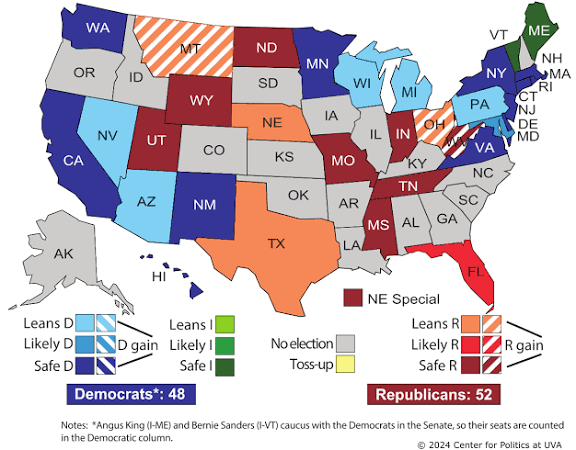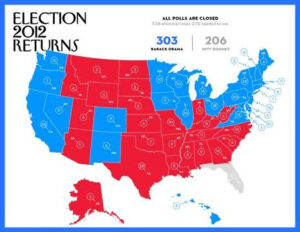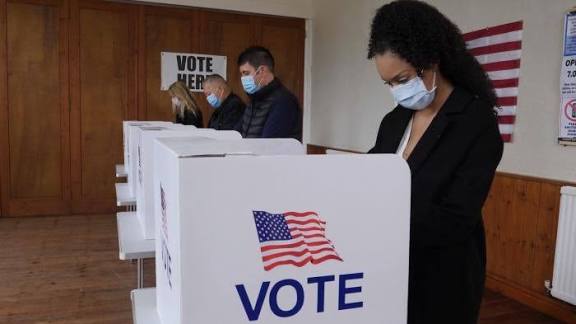Midterm Map Shifts: Early Polling Shows Surprise Movement in Key Swing States

It’s still too early to say with certainty what impact the mid-decade gerrymandering spasm will have on the results of the 2026 midterms. Today we will discuss about Midterm Map Shifts: Early Polling Shows Surprise Movement in Key Swing States
Midterm Map Shifts: Early Polling Shows Surprise Movement in Key Swing States
As the 2026 midterm elections come into view, the political arena is undergoing a transformation not seen in decades. Elections are normally shaped by candidates, issues, and national mood — but this time, the shape of the battlefield itself is changing. A wave of mid-decade redistricting, fueled by political pressure and court rulings, is colliding with early polling shifts that are upending expectations in critical swing states.
The resulting picture is a volatile “midterm map shift,” where the contours of congressional power may be rewritten not only by voters but by the boundaries that define their districts. For both Democrats and Republicans, this is a moment of high opportunity and high risk.
A Rare Mid-Decade Redistricting Wave

Typically, congressional maps are redrawn once every ten years following the U.S. Census. However, the 2025–2026 political cycle is an anomaly. Several states — including Texas, California, North Carolina, Missouri, Ohio, and Utah — have pursued mid-decade map changes. This wave was catalyzed by partisan pressure, legal rulings, and grassroots movements demanding fairer representation.
The motivations vary. In some states, Republican legislatures sought to secure additional seats ahead of the midterms. In others, Democratic-led states countered with their own redistricting efforts, aiming to offset potential disadvantages. Court decisions have further complicated the landscape, overturning maps in some regions and forcing sudden redraws.
This combination has produced one of the most aggressive and wide-reaching mid-cycle redistricting battles in modern history.
State-by-State Breakdown: Shifting the Ground Beneath the Midterms
Texas
Texas has become the epicenter of the redistricting fight. The state’s ruling party strategically redrew districts in major metro areas such as Houston, Austin, and Dallas. The revised maps cluster Democratic voters together while expanding the reach of rural and suburban Republican-leaning areas.
This shift could potentially flip several Democratic-held districts. The backlash was immediate: legislators protested the vote, while civil rights groups filed lawsuits arguing voter dilution and discrimination. Court battles may continue well into the 2026 cycle, leaving candidates and voters in limbo.
California
In response to redistricting pushes elsewhere, California embarked on its own aggressive map revision. The new lines are designed to bolster Democratic dominance, turning several competitive areas into reliably blue districts.
Political analysts note that California’s new map is unusually assertive for the state, as it consolidates Democratic advantages in coastal cities and suburban regions. The move could shift multiple seats in the Democrats’ favor and counterbalance Republican gains elsewhere.
However, critics argue that the map reduces competitiveness — a trend that may have long-term consequences for democratic accountability.
North Carolina
North Carolina, already a frequent battleground for redistricting fights, has redrawn its congressional map once again. The new map is expected to improve Republican odds in multiple districts, especially in the Piedmont and rural east.
Observers view this as part of a broader strategy to lock in structural advantages ahead of the midterms. Yet the map is likely to face legal scrutiny, given the state’s long history of court interventions into partisan gerrymandering.
Missouri
Missouri’s redistricting efforts revolved around reshaping a key Democratic stronghold in the Kansas City region. The newly approved map breaks apart a previously safe Democratic district, dispersing its voters across multiple Republican-leaning areas.
This maneuver has sparked political activism and legal challenges, including attempts to put the map on the ballot for a statewide referendum. The outcome of these efforts could reshape Missouri’s political landscape for years to come.
Utah
In Utah, the redistricting fight took an unexpected turn when a court struck down a previous map for unfairly weakening Democratic representation. The newly ordered map creates a district centered around Salt Lake City that leans Democratic — a rare foothold in an otherwise conservative state.
The ruling has energized Democratic organizers and given the party a realistic chance at capturing a seat that had been elusive for decades.
Ohio
Ohio’s bipartisan redistricting commission introduced a map that subtly shifts two competitive districts in favor of Republicans. While less dramatic than other states’ changes, this tweak could still influence the overall House balance given Ohio’s status as a perennial battleground.
Unexpected Early Polling Momentum
Even as new maps reshape the electoral terrain, early polling is revealing surprising voter sentiment shifts that neither party expected.
Democratic Enthusiasm Surges in Key Areas
Off-year elections in 2025 showed unexpectedly strong Democratic performance. Suburban districts — traditionally swing regions — swung left again, suggesting that Democrats may hold onto or expand gains made in the previous cycle.
Candidates who embraced moderate messaging and local economic issues performed particularly well. These results indicate that Democrats may be benefiting from heightened grassroots energy, especially in districts affected by recent map changes.
Republican Challenges Amid Approval Dips
Early national surveys suggest weakening public approval for the Republican presidential administration. Economic volatility, immigration challenges, and healthcare concerns have contributed to declining confidence.
While midterms historically disadvantage the incumbent president’s party, the current levels of dissatisfaction could deepen those losses unless party messaging adapts quickly.
In swing states where newly drawn maps favor Republicans, polling nonetheless shows tighter margins than expected — suggesting that the map advantage may not fully translate into electoral advantage.
A Shrinking Battleground
Political strategists warn that despite the frenzy of map redraws, the number of truly competitive Congressional districts may be shrinking. With both parties drawing increasingly partisan maps, many districts lean heavily toward one party, reducing opportunities for electoral upsets.
This trend reinforces polarization: if lawmakers only answer to strongly partisan electorates, cross-party cooperation becomes less likely.
How Midterm Map Shifts May Reshape the 2026 Elections
1. A Redistricting Arms Race
Both parties are pushing the limits of what redistricting laws allow. Republicans are consolidating power in Texas, North Carolina, Ohio, and Missouri, while Democrats counter in California and capitalize on victories in states like Utah.
This arms race raises concerns about long-term institutional trust.
2. Legal Uncertainty
Many new maps remain under legal challenge. Courts could stall or overturn redistricting plans — even close to election season. This uncertainty makes it harder for campaigns to organize, fundraise, and mobilize voters effectively.
3. Momentum Could Override Maps
While new districts can tilt the scale, they cannot fully predict voter behavior. If Democrats maintain enthusiasm — or if Republicans face a tough national climate — the expected gains from redistricting could be blunted.
Conversely, if Republicans regain footing on key issues, they could still capitalize on favorable maps.
4. Voter Backlash Could Be Significant
Aggressive redistricting tends to spark public anger, especially when voters feel their communities are being carved up for partisan gain. Both parties risk backlash, but states with heavy-handed map shifts may see the strongest response.
5. Fewer Swing Seats, More Polarization
Safe districts may protect incumbents, but they also reduce the need for candidates to appeal to the center. Over time, this reinforces ideological divides and weakens incentives for compromise.
The midterm map shifts could accelerate this trend.
Strategic Recommendations for Both Parties
For Republicans
Don’t rely solely on maps. Focus on candidate quality and messaging that resonates beyond the base.
Address key voter concerns. Economic issues, security, and healthcare remain top priorities for suburban swing voters.
Navigate legal risks. Prepare for court rulings that could temporarily reverse gains.
For Democrats
Harness grassroots energy. Continue mobilizing suburban and young voters where early enthusiasm is strongest.
Use redistricting backlash strategically. Framing map changes as threats to voter fairness can galvanize turnout.
Target newly favorable areas. Places like Utah and parts of California provide rare expansion opportunities.
Conclusion
The 2026 midterm elections will be shaped by a convergence of unprecedented forces. The midterm map shifts emerging from mid-decade redistricting are colliding with unexpected polling trends, producing a political environment that is both fluid and complex.
While redistricting may alter district lines, early voter sentiment suggests that the electorate itself is also shifting, often in ways that defy partisan expectations. As both parties prepare for a high-stakes battle, success will depend on not only how the maps are drawn, but how effectively they can inspire and mobilize voters.
In a volatile electoral landscape, the midterms may ultimately hinge on a simple question: which party adapts fastest to a map — and a nation — in transition?
How useful was this post?
Click on a star to rate it!
Average rating 0 / 5. Vote count: 0
No votes so far! Be the first to rate this post.
About the Author
usa5911.com
Administrator
Hi, I’m Gurdeep Singh, a professional content writer from India with over 3 years of experience in the field. I specialize in covering U.S. politics, delivering timely and engaging content tailored specifically for an American audience. Along with my dedicated team, we track and report on all the latest political trends, news, and in-depth analysis shaping the United States today. Our goal is to provide clear, factual, and compelling content that keeps readers informed and engaged with the ever-changing political landscape.




